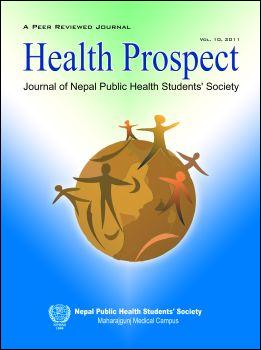Practices on Over the Counter Medication among Mothers of Under Five Aged Children Attending Child OPD at Friends of Shanta Bhawan, Boudha, Kathmandu
DOI:
https://doi.org/10.3126/hprospect.v10i0.5640Keywords:
Over the counter, under five aged childrenAbstract
Background: Over the counter medicines are drugs that are brought without a medical prescription. The use of many OTC medicines in children is usually initiated by parents. Self medication in developing countries from a biological point of view point the risks that are involved in developing countries are reportedly higher than in industrialized countries. This can be related to the fact that in many developing countries drugs are available over the counter. In a study conducted in Pokhara, western Nepal found that 59% had taken self medication including OTC medicines.
Objective: To assess the practices on OTC drug among mothers of under five aged children
Methodology: The descriptive cross sectional study design was used. All the mothers of under five aged children visiting the Friends of Shanta Bhawan at the child OPD and had taken OTC medicines during last 6 months for child and wished to participate in the study were included using non probability purposive sampling technique during four weeks of data collection. The data was collected from 100 samples by face to face interview technique using semi-structured questionnaire. Descriptive analysis such as mean, median, frequency, percentage, standard deviation was calculated according to the objectives.
Results: Most of the respondents (92%) took OTC for fever, 75% took for cough and cold. 65% of respondents used OTC medicines because the pharmacy is near from their homes and 48% used it due too easy to get the medicine as compared to visit to doctors or hospital.
Conclusion: This study concluded that mothers used OTC for the common problems of their children because OTC medications are near to reach and easy to get than to visit to doctors or hospitals.
DOI: http://dx.doi.org/10.3126/hprospect.v10i0.5640
Health Prospect Vol.10 2011, pp.19-21




